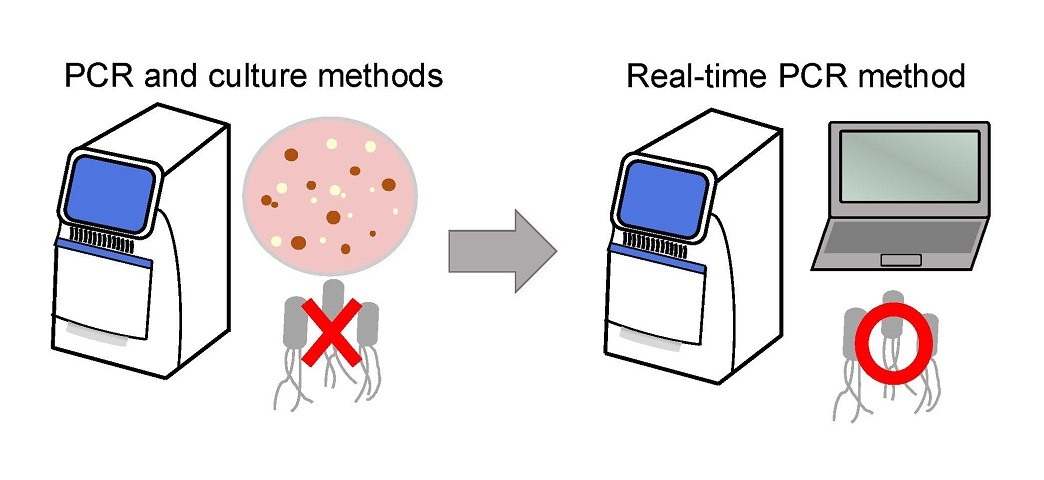Research News
May 23, 2024
- Veterinary Science
Mistaken identity cleared up of foodborne pathogen causing severe symptoms in children
Novel real-time PCR method might become diagnostic tool targeting emerging bacterium responsible for food poisoning outbreaks
More accurate detection method
Osaka Metropolitan University-led researchers used a real-time PCR method to effectively detect the emerging zoonotic organism Escherichia albertii.
Credit: Osaka Metropolitan University

The prevalence of pathogenic E. coli has meant the frequent misidentification of a similar bacterium of the Escherichia genus. E. albertii is an emerging zoonotic foodborne pathogen, first isolated in Bangladesh in 1991. Large-scale outbreaks of food poisoning caused by E. albertii have since been reported especially in Japan, causing severe symptoms in both children and adults.
In the hopes of establishing a diagnostic method, a joint research group led by Professor Shinji Yamasaki and Dr. Sharda Prasad Awasthi, a specially appointed associate professor, from the Graduate School of Veterinary Science at Osaka Metropolitan University, have developed a way to detect E. albertii more accurately using a quantitative real-time PCR method.
Specimen examination using this technique showed that E. albertii survived in the human intestinal tract for approximately four weeks and continued to be found in feces. The identical genotype of the bacterial DNA of E. albertii that infected siblings also suggested that intrafamilial transmission may have occurred.
“These results and a novel real-time PCR developed in this study are expected to contribute not only to the selection of appropriate treatment for E. albertii gastroenteritis, but also to the elucidation of the source and route of infection,” Professor Yamasaki declared.
The findings were published in Heliyon.
Funding
This work was supported in part by JSPS KAKENHI grant number 17H04651.
Paper information
Journal: Heliyon
Title: Detection of prolong excretion of Escherichia albertii in stool specimens of a 7-year-old child by a newly developed Eacdt gene-based quantitative real-time PCR method and molecular characterization of the isolates
DOI: 10.1016/j.heliyon.2024.e30042
Authors: Sharda Prasad Awasthi, Akira Nagita, Noritoshi Hatanaka, Jayedul Hassan, Bingting Xu, Atsushi Hinenoya, and Shinji Yamasaki
Published: 27 April 2024
URL: https://doi.org/10.1016/j.heliyon.2024.e30042
Contact
Graduate School of Veterinary Science
Email: yshinji[at]omu.ac.jp
*Please change [at] to @.
SDGs
